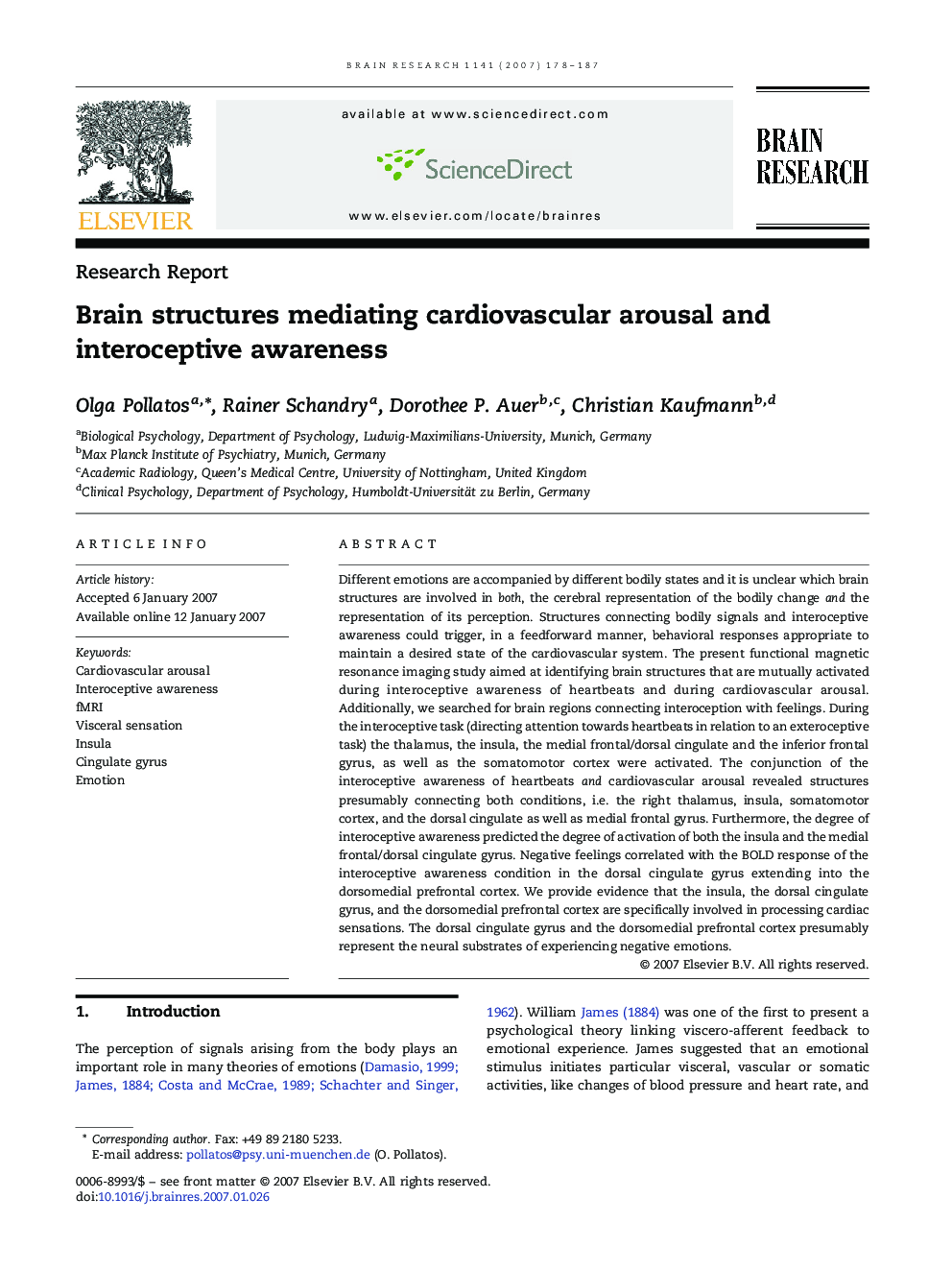| Article ID | Journal | Published Year | Pages | File Type |
|---|---|---|---|---|
| 4331401 | Brain Research | 2007 | 10 Pages |
Different emotions are accompanied by different bodily states and it is unclear which brain structures are involved in both, the cerebral representation of the bodily change and the representation of its perception. Structures connecting bodily signals and interoceptive awareness could trigger, in a feedforward manner, behavioral responses appropriate to maintain a desired state of the cardiovascular system. The present functional magnetic resonance imaging study aimed at identifying brain structures that are mutually activated during interoceptive awareness of heartbeats and during cardiovascular arousal. Additionally, we searched for brain regions connecting interoception with feelings. During the interoceptive task (directing attention towards heartbeats in relation to an exteroceptive task) the thalamus, the insula, the medial frontal/dorsal cingulate and the inferior frontal gyrus, as well as the somatomotor cortex were activated. The conjunction of the interoceptive awareness of heartbeats and cardiovascular arousal revealed structures presumably connecting both conditions, i.e. the right thalamus, insula, somatomotor cortex, and the dorsal cingulate as well as medial frontal gyrus. Furthermore, the degree of interoceptive awareness predicted the degree of activation of both the insula and the medial frontal/dorsal cingulate gyrus. Negative feelings correlated with the BOLD response of the interoceptive awareness condition in the dorsal cingulate gyrus extending into the dorsomedial prefrontal cortex. We provide evidence that the insula, the dorsal cingulate gyrus, and the dorsomedial prefrontal cortex are specifically involved in processing cardiac sensations. The dorsal cingulate gyrus and the dorsomedial prefrontal cortex presumably represent the neural substrates of experiencing negative emotions.
